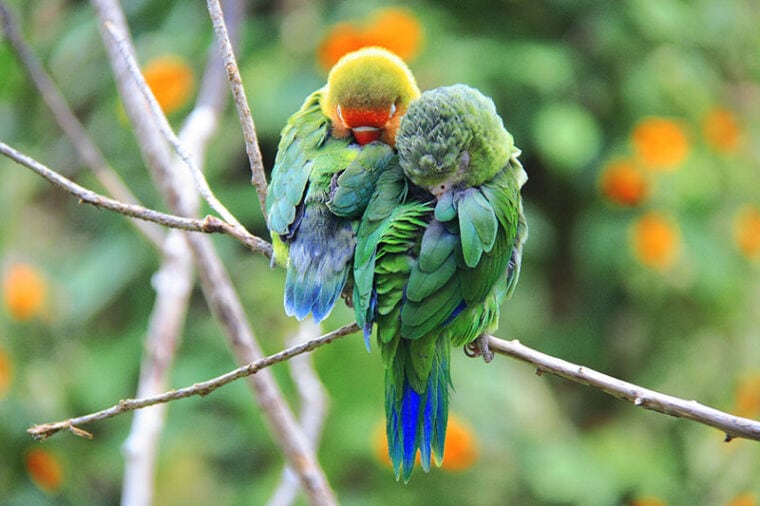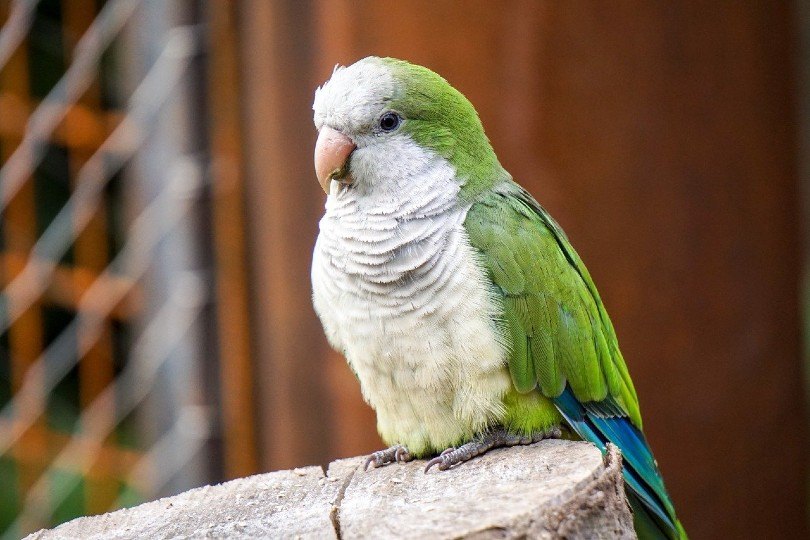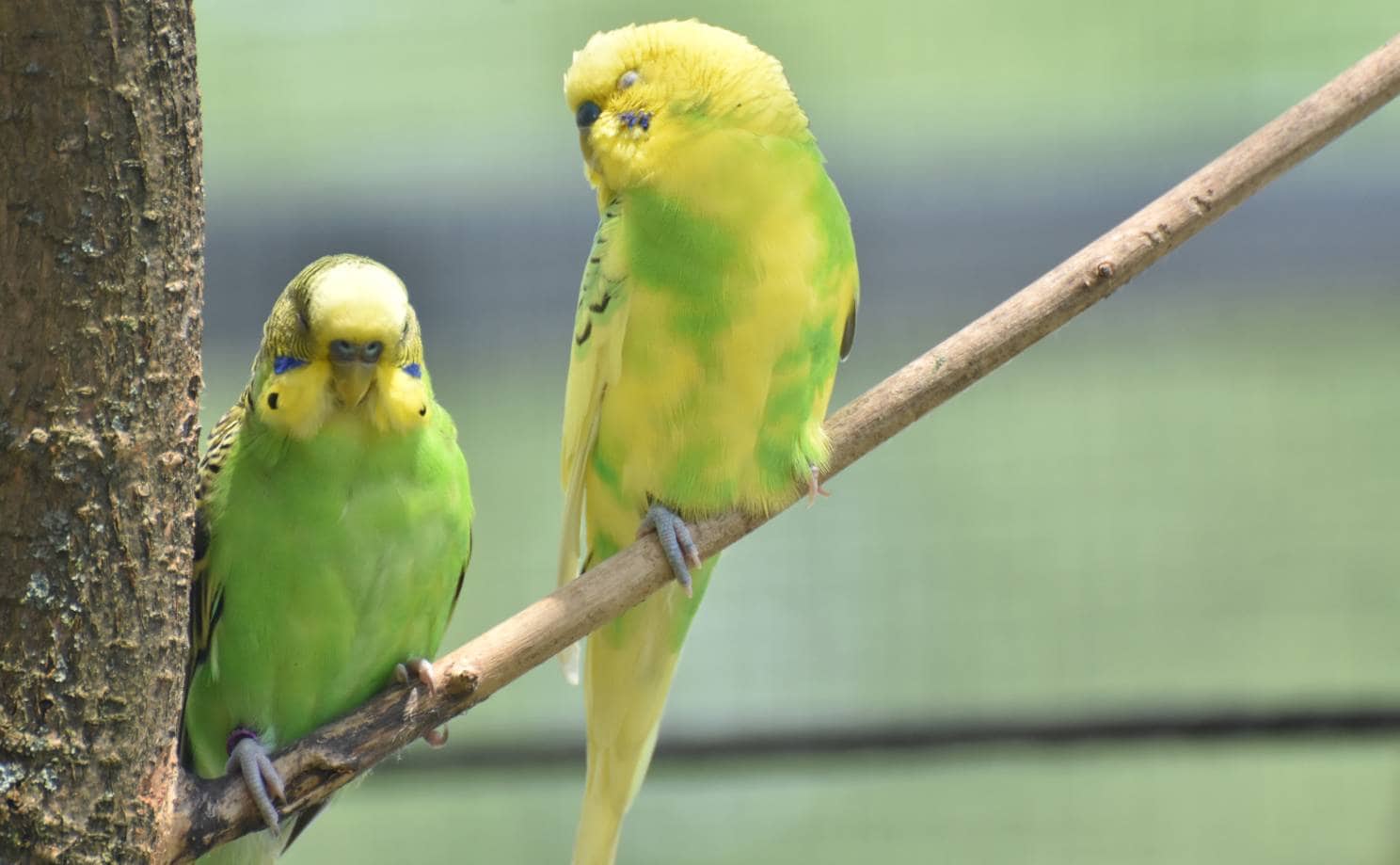
Click to Skip Ahead
The animal kingdom undergoes many changes during the winter months to ensure its survival. For example, bears, skunks, groundhogs, and bats hide away under spring to conserve energy. What about parrots, though? Do they hibernate? While some birds go into a hibernation-like state of torpor every day (looking at you, hummingbirds), parrots don’t go into hibernation or torpor at all.
Keep reading to learn more.
Do Parrots Hibernate?
No, most parrots do not hibernate. Parrots are primarily found in tropical and subtropical regions where hibernation is unnecessary. Even if parrots lived in a colder climate, they have an excellent means of transportation that enable them to whisk away during winter to areas where food is more readily available.

Do Parrots Migrate?
Three parrot species use this aforementioned mode of transportation to migrate during the year’s cold months.
The swift parrot is found only in southeastern Australia. They breed in Tasmania in the summer months (September through February) and migrate to the southeast mainland during the winter. This species is critically endangered due to predation by sugar gliders. The swift parrot migration pattern is difficult to predict as they will intermittently return to areas only if food is available.
The orange-bellied parrot only lives in southern Australia. Like the swift parrot, it breeds during the summer in Tasmania and returns to the south mainland of Australia in the winter. Also, like the swift parrot, the orange-bellied parrot is critically endangered, with just 14 living in the wild in 2017.
Blue-winged parrots are the third parrot species that migrate in the winter. Like the previous two, this species lives in Tasmania and southeast Australia. However, unlike the other migratory parrots, this one is not considered critically endangered, though it’s listed as vulnerable.
Do Any Parrots Live in Cold Climates?
Several species of parrots live in the cooler and more temperate areas of South America and New Zealand.
The Carolina parakeet, sometimes also called the Carolina conure, was a unique species of parrot. Sadly, it went extinct in 1918, but it was the first indigenous parrot in the United States. Unlike other U.S. birds, it didn’t migrate south in the winter but weather the cold. They were seen in northern states during cold winters.
Monk parakeets, or Quaker parrots, can survive in most cold climates due partly to their penchant for building communal nests atop heat-producing electrical equipment. As a result, they have colonies as far north as NYC, Chicago, and Wisconsin.
The rose-ringed parakeet, or Indian ringneck parrot, is native to areas of Africa and southern Asia, but there are feral colonies worldwide. It has adapted to the cold weather in the Himalayan foothills, so now it can easily withstand the chilly European winter conditions.

What Temperature Is Too Cold for Companion Parrots?
Since most companion parrots are naturally found in tropical climates, it stands to reason that they do not withstand cold very well.
If you have a pet parrot, the best place for it is inside, especially during the winter. The perfect temperature for a parrot’s room is between 65–80 degrees Fahrenheit (18-26.7°C), though they may be able to withstand a broader range. A constant temperature is more important than a temperature than constantly fluctuates. For more details, check out our guide on the ideal room temperature for parrots.
Final Thoughts
While parrots don’t hibernate, some species live comfortably in colder climates, while others migrate during winter. Your companion parrot won’t take very well to freezing temperatures, though, so the best place for it is inside a nice and cozy room in your home. During the summer, you might consider an outside aviary, but take your local climate into account. Though parrots live in tropical areas of the world, temperatures that are too hot can do more harm than good.
Featured Image Credit: Anna Azimi, Shutterstock









